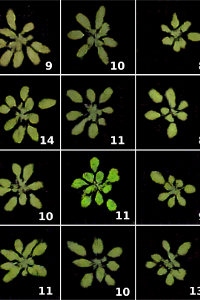Mario Valerio Giuffrida, Hanno Scharr, Sotirios A. Tsaftaris
CVPPP Workshop (2017)
Mario Valerio Giuffrida, Hanno Scharr, Sotirios A. Tsaftaris (2017) “ARIGAN: Synthetic Arabidopsis Plants using Generative Adversarial Network,” Workshop: Computer Vision Problems in Plant Phenotyping (CVPPP), ICCV.
Abstract
In recent years, there has been an increasing interest in image-based plant phenotyping, applying state-of-the-art machine learning approaches to tackle challenging problems, such as leaf segmentation (a multi-instance problem) and counting. Most of these algorithms need labelled data to learn a model for the task at hand. Despite the recent release of a few plant phenotyping datasets, large annotated plant image datasets for the purpose of training deep learning algorithms are lacking. One common approach to alleviate the lack of training data is dataset augmentation. Herein, we propose an alternative solution to dataset augmentation for plant phenotyping, creating artificial images of plants using generative neural networks. We propose the Arabidopsis Rosette Image Generator (through) Adversarial Network: a deep convolutional network that is able to generate synthetic rosette-shaped plants, inspired by DCGAN (a recent adversarial network model using convolutional layers). Specifically, we trained the network using A1, A2, and A4 of the CVPPP 2017 LCC dataset, containing Arabidopsis Thaliana plants. We show that our model is able to generate realistic 128×128 colour images of plants. We train our network conditioning on leaf count, such that it is possible to generate plants with a given number of leaves suitable, among others, for training regression based models. We propose a new Ax dataset of artificial plants images, obtained by our ARIGAN. We evaluate this new dataset using a state-of-the-art leaf counting algorithm, showing that the testing error is reduced when Ax is used as part of the training data.




